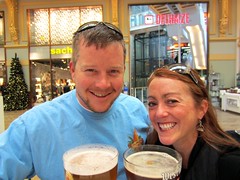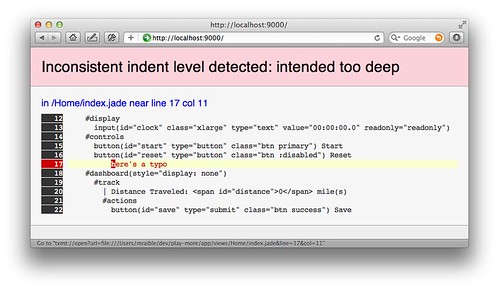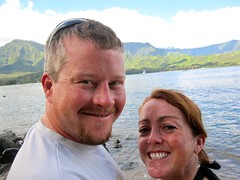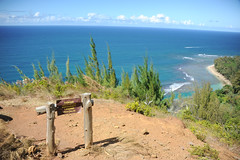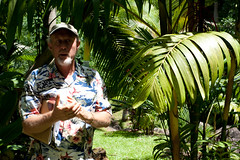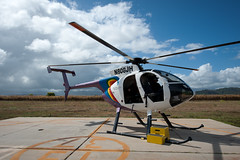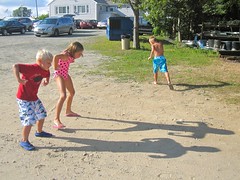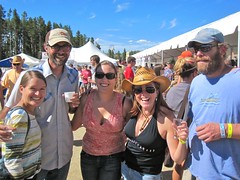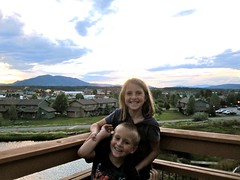Our Engaging Trip to Paris and Antwerp
If you're a technologist, you should attend the Devoxx conference at least once in your life. It's one of the finest conferences on the planet. If you're a fan of Belgian beer, you owe it to yourself to visit Belgium to savor a taste. If you're a romantic, Paris is a recommended destination. Since I'm a technologist, love Belgian beer and consider myself a romantic, I went for the trifecta a couple weeks ago on what's becoming an annual trek to Devoxx. When Trish and I traveled to Devoxx last year, we flew to Amsterdam and took the train to Antwerp. This year, we decided to fly to Paris and take the train.
Much like last year, we witnessed another Broncos over Chiefs victory the Sunday before we left. That night, I stayed up until the wee hours of the morning finishing my Devoxx presentation. We left Denver around noon and met up with James Ward at the Red Carpet Club in Chicago. While sipping cocktails and catching up, I wrote a blog post about how PhoneGap rescued me a couple days earlier.
We slept soundly on the flight over, thanks to little sleep the night before. After arriving in Paris, we took the train to the the Notre Dame de Paris and had some breakfast nearby.
We were planning on exploring throughout the day, but quickly realized that hauling our bags around was no fun and headed to Gare du Nord to catch a Thalys train to Brussels. We gasped at the cost of two first-class tickets, but soon forgot when we settled into our seats with free wi-fi, Belgian beers and power. After talking a local train to Antwerp, we finished our 21-hour journey by checking into the Hilton Antwerp in the city center. We were warmly welcomed with excellent Belgian beers on ice in our room and celebrated with a delicious meal at De Godevaart.
On Wednesday, I headed to Devoxx and attended a couple of great talks: Play 2.0, A web framework for a new era and PhoneGap for Hybrid App Development. As you can imagine, both talks were extremely interesting for me since I'd been using Play for several months and was recently saved by PhoneGap. Play 2.0 Beta was announced just before the Play talk and my blog post about the Play 2.0 session was picked up by Hacker News and the hits rolled in.
That afternoon, I headed back to my hotel with James Ward and met up with Trish for a couple beers. We spent a few hours in our hotel lobby updating presentations, editing videos, editing photos and getting ready for our talks on Thursday. That evening, we enjoyed a scrumptious dinner in the dungeon-like Pelgrom and conversations with Kevin Nilson, Sadek Drobi, Guillaume Bort and David Geary. I was pleased to find out from Sadek and Guillaume that Play 2.0 will include many fast website best practices, including concatenation, minification and gzipping of static assets. We retired early to get a good night's sleep before my talk on Thursday.
On Thursday, both Trish and I journeyed to Devoxx to watch James Ward talk about how to deploy Java, Play Framework, and Scala apps on Heroku. My talk was an hour later and I gulped as I stood up front and watched the (very large) auditorium fill up with Devoxxians. Since I'd never rehearsed my talk or timed it, I was a bit nervous. Luckily, it ended up being one of my best-timed performances and there was even time for Q and A at the end. You can imagine the smile on my face as AC/DC's Thunderstruck blasted through the speakers during my video demo. After my talk finished, it was great to see all the positive feedback on Twitter and enjoy an "Atlas Beer" while watching Java Posse Live.
That evening, we had dinner with the Java Posse crew and James Ward before heading to the Devoxx Party @ Noxx.
Yes, we had an awesome time at Devoxx. I was pleased with the positive response from my talk and learned a bunch from the few talks I attended. Thanks to Stephan for inviting me and organizing one of the best conferences I've ever attended. For our last night in Antwerp, we dined at Huis De Colvenier and especially enjoyed our aperitif in the 19th-century wine cellar.
Paris and Beyond
This brings us to my favorite part of this story. I was pretty stressed leading up to our departure to Devoxx because I had so many deadlines. I had a deadline with my current client to finish up some features before I left, I had to finish my Devoxx presentation (and app developed for the talk) and I had a secret deadline to finish my proposal to Trish. That's right, I was planning on proposing marriage to my dream girl. I mean, we were going to the diamond capital of the world (Antwerp) and one of Earth's most romantic cities (Paris). It seemed like the perfect opportunity to ask her to marry me. We did some ring shopping before we left Denver, but she didn't realize I had purchased one before we left.
We're both big music fans, so I decided months earlier that I would propose with lines from songs we both liked. Of course, I waited until the last minute to compose my prose, but I did finish it before we left for Europe. However, with all the Devoxx shenanigans, I didn't have time to memorize my proposal. Instead, I recorded it using the "Voice Memos" on my iPhone. I did this in the wee hours of the morning on Friday, while I was watching the Broncos game on the internet.
Saturday afternoon, we traveled to Paris via Thalys and checked into our hotel around sunset. When we stepped outside an hour later, I remember saying to Trish, "the Eiffel Tower looks pretty small, I thought it'd be bigger". After walking for a bit, it turned from small to big to huge. My plan that night was to propose on the tower. As Trish snapped pictures along our walk, I was taking out the piece of paper I had the proposal printed on and trying to memorize it. As you can imagine, I had to to this stealthily and by the time we reached the Eiffel Tower, I had enough memorized to propose. We arrived around midnight and were disappointed to find it was closed. This terminated my proposal plans for that night, but we still enjoyed the sparkling tower lights and took several pictures.
The next day, Sunday, we traveled to the Château de Versailles. This was a recommendation from my good friend Eric, who had recently traveled to Paris with his wife, Heather. In fact, I owe a lot to Eric. He recommended we extend our trip to Paris (he'd traveled there disgruntled about not doing a beach vacation, then fell in love with the city) and suggested a number of great locations to visit. He also recommended proposing in the Gardens of Versailles, a very romantic location according to him. I had this in the back of my mind as we did an audio tour through the Palace of Versailles. As we ventured out into the Orangerie, I started hatching a plan to get Trish down to the gardens and try to rent bikes. We both love biking and the outdoors, so I figured it'd be a nice way to spend our memorable moment. As we strolled closer and I didn't see bikes to rent, I spotted the Grand Canal and noticed they had row boats.
When we first arrived at the boat dock, there was a long line, but it magically disappeared moments later. We stepped into the boat, rowed to the center of the canal and paused for a bit to take in the beautiful day and the setting sun. Trish asked me to row to a better spot so she could photograph the sunset, but instead I said "here, listen to this" and handed her my headphones. I pressed play and watched her face light up as she heard my voice in her ears. 90 seconds later, I asked "Trish McGinity, will you marry me?" She responded with, "Of course!" 
The rest of our trip in Paris was quite romantic and fun. We decided to wait until we got back to The States before telling anyone we were engaged. This meant we had three days of just us, Paris and some of the most beautiful art in the world. We explored the Louvre for 5-hours on Monday, marveling at the low-rider on display near the entrance and all the famous paintings.
We imbibed in $40 martinis at The Hemingway Bar and scarfed down some delicious pizza at Gambino's. We had breakfast at Angelina's, toured La Sainte-Chapelle, hiked up Arc de Triomphe and wandered through the shopping districts Champs-Élysées and Faubourg St-Honoré. Yes, we fell in love with Paris and can't wait to return for Devoxx France in April.
We departed Paris on the Wednesday morning before Thanksgiving and arrived in Boston that evening. We spent the next three days with Trish's family and our good friends, Chris, Julie, Lili and Wes. We did a 5K Turkey Trot on Thursday morning, followed by football watching and eating succulent turkey while basking in everyone's joy for us. We smiled, giggled, laughed, guffawed, smiled some more and had an all-around great time the rest of the weekend.
We returned home on Sunday evening, departing Boston's Logan airport only minutes after the Broncos kicked a field goal in overtime to beat the Chargers. Our flight was delayed just long enough (3 hours) that we got to watch almost the whole game. It was the perfect ending to a phenomenal trip.
To see more pictures from this adventure, see Trish's fantastic photos and mine on Flickr.


















